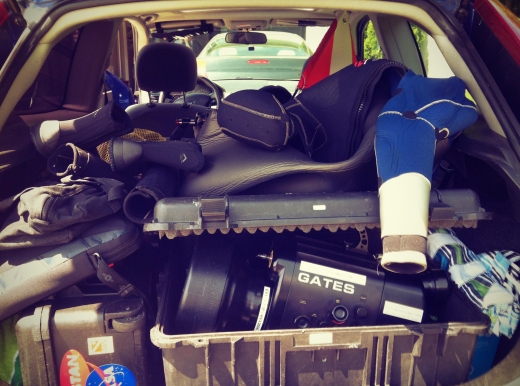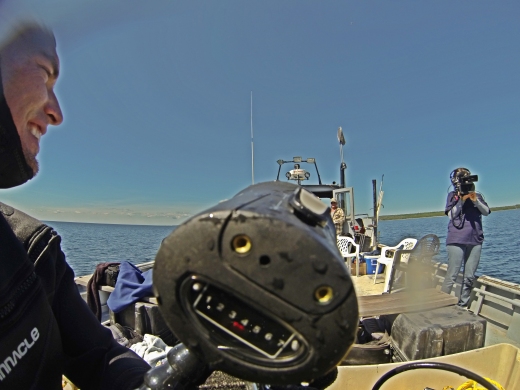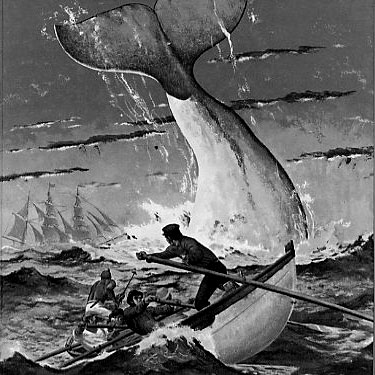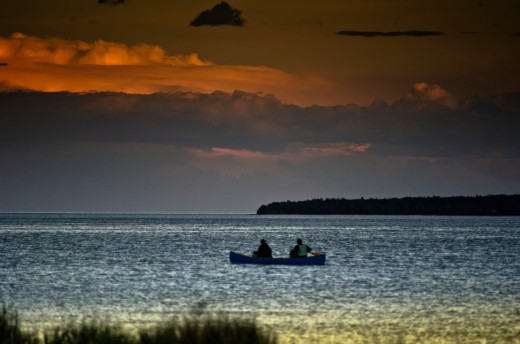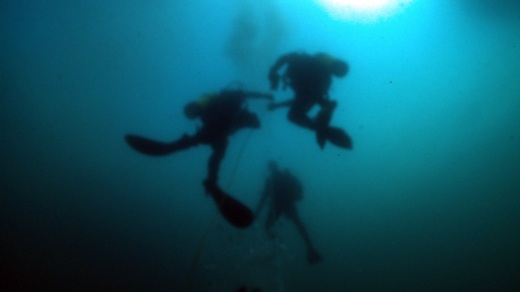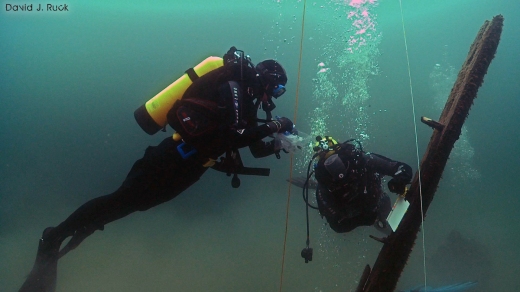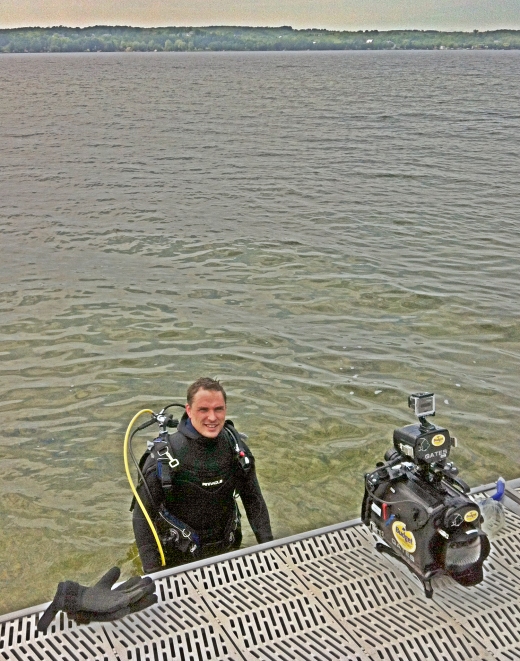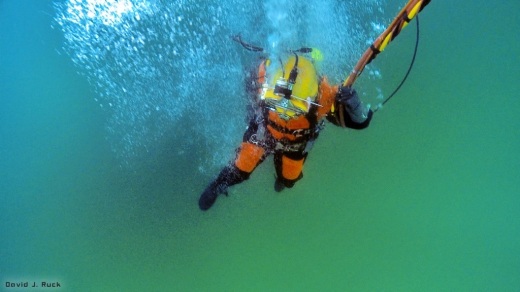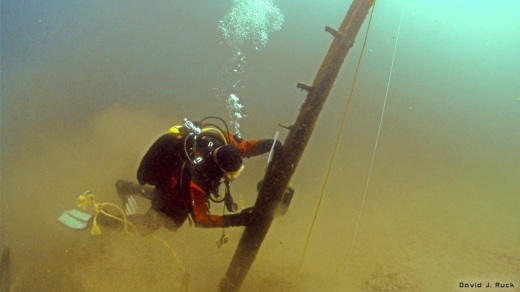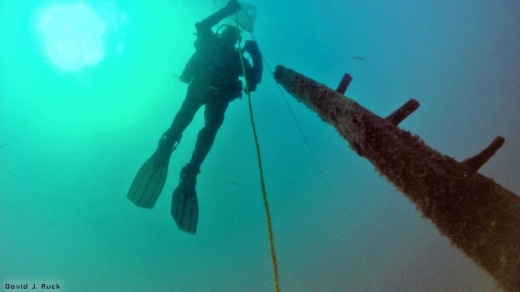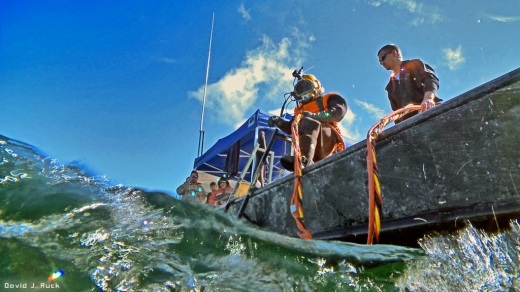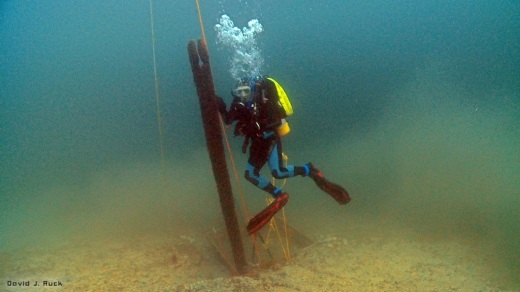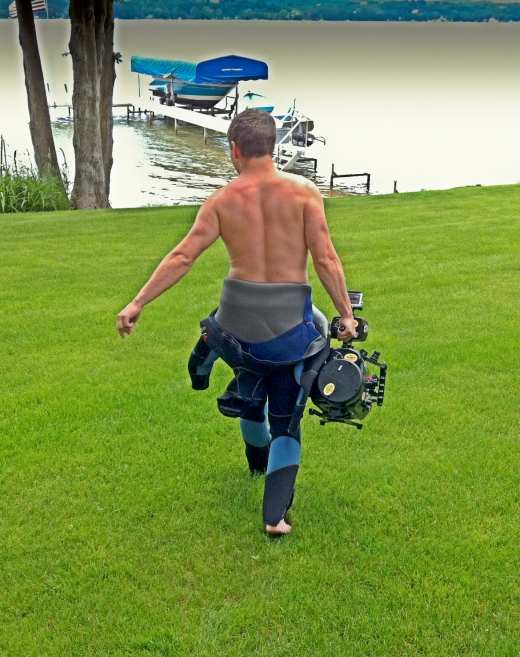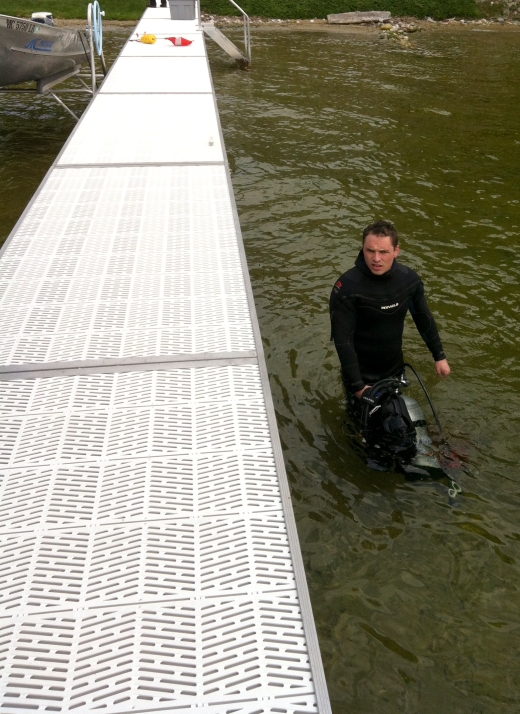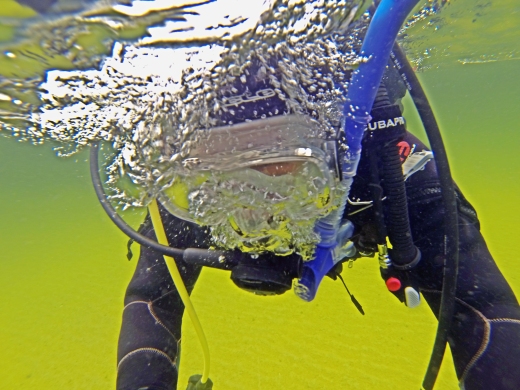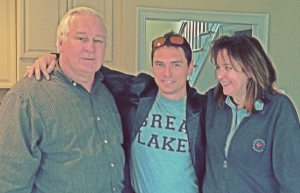A few short months ago, I wasn’t clear that I would be able to get a reasonable camera to shoot the underwater saga of the scientific aspects of the expedition as it unfolded in northern Lake Michigan. We were lucky enough to squeeze just enough out of the budget for the project to put together a camera package from Budget Rentals in Florida, who gave us a really great rate for the duration of the expedition. These folks prepped the camera up real nice, shipped it to Traverse City via Delta Airlines, and made sure it arrived on time. Many thanks to Eden and the team there.
It’s a difficult piece of gear to lug around, especially when you remember that if you are using the super-wide dome port, that’s a $6000.00 piece of glass leading the way. When I was shooting, I’d always insist that whoever was handing me the camera leave it on until the very last moment before handing it over the deck of the boat.
I had a Gopro Hero 3 Black Edition mounted atop the external monitor on the Gates housing, set to take a photo every 10 seconds. This was a great way to document the dives as well as provide a way to gather 12 megapixel photos along the dive. (Screen grabs of the video would only be 1920×1080)
The housing needs to be well-maintained. One cat hair gets on the o-ring and you could have disaster. Luckily, I didn’t have that problem! Every time the housing was opened, the o-rings were checked, and carefully resealed. Using an underwater camera is like having a special needs child. You really have to make sure about 15 things are in place, exactly where they need to be, knobs aligned, etc. Even then, you may have missed something and something could go wrong. Gates has a reputation for being “bulletproof” and in this case, I’d say that is about 99% true. It was the focusing issue on day one, where I couldn’t get either auto or manual focus to work that I had my doubts. I never did figure out what was wrong with the thing… that was even more upsetting. How would I make sure it didn’t happen again? You have to be careful of the focus ring on the EX1. It pops forward or backward to turn it from auto to manual/auto. What? That might be what happened: it was in the wrong position?
All in all, I can’t wait to use the GATES/EX1 again. Just a joy, once you get passed the fact that using it can be like one of those newer, complex video game controllers. But once it all makes sense, shooting underwater is a pure joy I’d soon like to repeat. Your world narrows down to a manageable number of factors and you can truly get lost and completely enjoy the subjects you’re shooting.
Someone please ask me to do this again!
